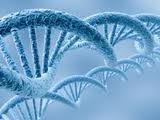Polycystic Kidney Disease and Polycystic Liver Disease
Polycystic kidney always appear with polycystic liver. Polycystic liver refers to the liver with more than three cysts, distributing along the hepatic duct. If you have polycystic kidney, you probably have polycystic liver.
Polycystic liver has the family hereditary tendency. Female is more than male. The morbidity of 3 years old is about 20% and 70 years old, 75%. If patients with successfully allograft kidney transplantation live for more than ten years, they will suffer from polycystic liver. The hyperplasia of the epithelium and mesenchyme in bile duct causes the multiple cysts in the liver tissues, namely polycystic liver disease. The bile duct dilation, congenital hepatic fibrosis and female hormone have a certain effect on PLD.
Cysts of PKD are of different size. Smaller can be found by micro-scope, bigger could occupy in the whole abdominal cavity. And liver will become huge from normal size.
Abdominal B-ultrasound and CT scan are the reliable method to examine whether cysts in liver are bleeding or not. And MRT is the method to distinguish hemorrhagic liver cysts, unhemorrhagic liver cysts and other liver disease.
Therefore, it is definitely necessary to prevent PLD for PKD patients in case of the aggravation. At the same time, treat the PKD and PLD as early as possible.




评论
发表评论